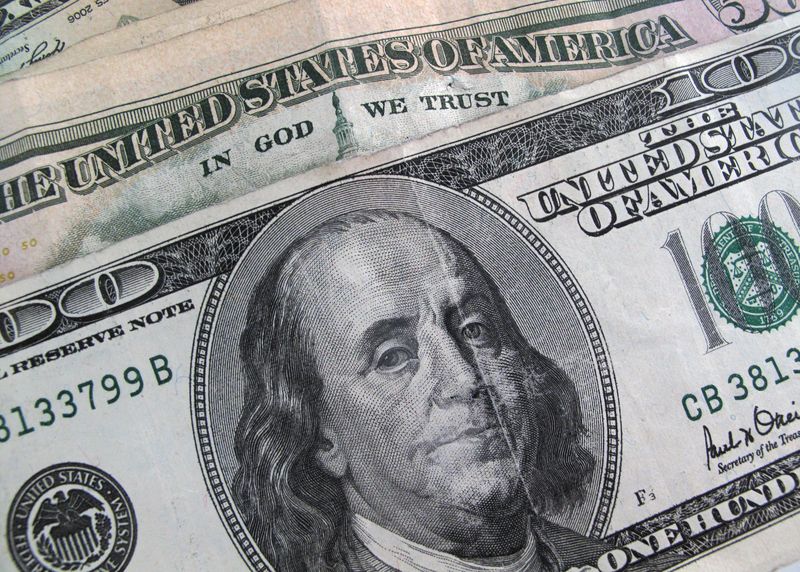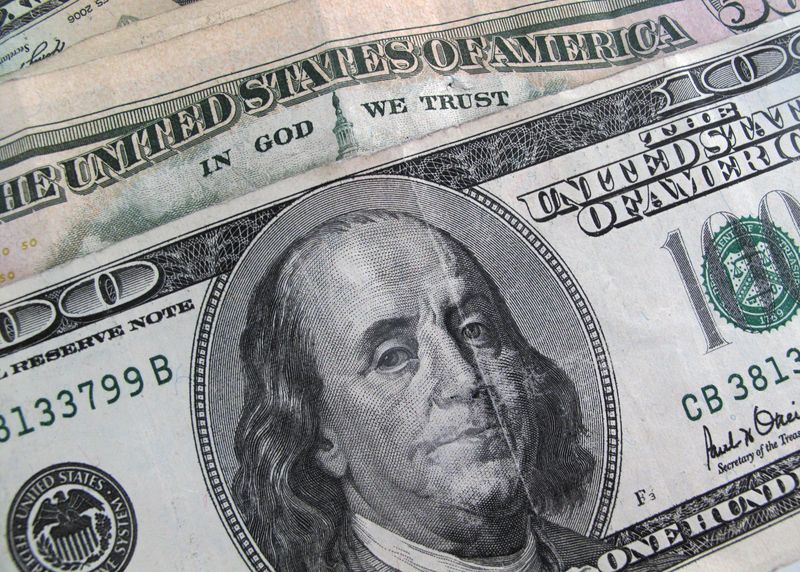
By Rae Wee
SINGAPORE (Reuters) -The dollar rose broadly on Monday and cryptocurrencies jumped as trades for a victory by Donald Trump in the upcoming U.S. elections gathered steam in the wake of an attempted assassination of the former U.S. President.
Trading was thinned in Asia with Japan out for a holiday, though news of the Trump shooting dominated the market mood and had investors narrowing the odds of a Trump victory come November.
The attempted assassination probably enhances Trump’s “reputation for strength”, said Jack Ablin, chief investment officer at Cresset Capital.
Online betting site PredictIT has a Republican win at 66 cents, from 60 cents on Friday, with the Democrats at 38 cents. The current odds indicate that Republicans are twice as likely to win the election as Democrats.
That sent the dollar rising broadly, which left the euro easing 0.14% to $1.0895, while sterling fell 0.12% to $1.2975.
Cash U.S. Treasuries were untraded in Asia on Monday owing to the Japan holiday, but 10-year Treasury futures edged lower, indicating yields will rise when cash trading begins later in the day. Bond yields move inversely to prices.
“The market reaction function to a Trump presidency has been characterised by a stronger U.S. dollar and a steepening of the U.S. Treasuries curve, so we might observe some of that this coming week if his election odds are assessed to have further improved following this incident,” said Rong Ren Goh, a portfolio manager at Eastspring Investments.
Crypto prices similarly surged in anticipation of a Trump win, with bitcoin last up 9% at $62,766. Ether jumped more than 7% to $3,331.60.
Trump has presented himself as a champion for cryptocurrency, although he has not offered specifics on his proposed crypto policy.
In other currencies, the Australian dollar eased 0.08% to $0.6778, while the New Zealand dollar slid 0.29% to $0.6100.
The dollar index was little changed at 104.20.
Under a Trump presidency, market analysts expect a more hawkish trade policy, less regulation and looser climate change regulations.
Investors also expect an extension of corporate and personal tax cuts expiring next year, fuelling concerns about rising budget deficits under Trump.
STILL STRUGGLING
Headlines from China also grabbed investors’ attention on Monday, as data showed the world’s second-largest economy grew much slower than expected in the second quarter, weighed down by a protracted property downturn and as job insecurity squeezed domestic demand.
Separate figures released earlier in the day showed China’s new home prices fell at the fastest pace in nine years in June, with the battered sector struggling to find a bottom despite government support measures to control oversupply and bolster confidence.
The Chinese yuan hardly reacted to the data and only slightly extended its losses from earlier in the session to last trade 0.14% lower at 7.2609 per dollar in the onshore market.
“On net, it’s a negative outcome. It does show that the second-quarter growth momentum appears to be weakening,” said Alvin Tan, head of Asia FX strategy at RBC Capital Markets.
“The second-quarter momentum weakening kind of implies that we’ll need more support to get the economy to the 5% target for the whole year.”
China’s once-in-five-year gathering of top officials, which usually ushers in policy changes, kicked off on Monday and the four-day plenum will be watched for measures to support the patchy recovery in the world’s second-largest economy.
Elsewhere, the yen reversed some of its gains from late last week and last stood at 157.97 per dollar, though remained not too far from a roughly one-month high of 157.30 hit on Friday.
Tokyo was thought to have intervened in the market to prop up the battered Japanese currency last week in the wake of a cooler-than-expected U.S. inflation report, with Bank of Japan data suggesting that authorities may have spent up to 3.57 trillion yen ($22.4 billion) to do so on Thursday.
Analysts said Monday’s holiday in Japan could make for ideal conditions for authorities to strike again given thin liquidity, similar to that of the April-May rounds of intervention.

“In order to make more ‘bang for their buck’, FX intervention in quiet conditions or after the release of softer U.S. economic data seems like a sensible move,” said Jane Foley, head of FX strategy at Rabobank.
“The intervention that was carried out this spring, indicated that the MOF is very prepared to act outside normal Tokyo trading hours.”
This post is originally published on INVESTING.




